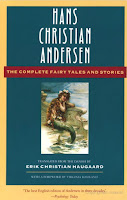"The Great Sea Serpent" is a fairy tale of how the fishes and sea creatures reacted to the laying of the Trans-Atlantic Telegraph Cable in 1866. In the story, the cable is thought to be some great sea serpent that originated from the creatures on the surface. The fish were trying to decide whether to bite it in two because they despised its presence in their world. The wise ones among them advised the more adversarial fish to leave it alone. The story ended with this paragraph:
Good for nothing!” said all the creatures in the sea, and held fast to the sea-cow’s opinion, so as to have an opinion. The little fish had its own thoughts. “That exceedingly long, thin serpent is perhaps the most wonderful fish in the ocean. I have a feeling it is.
The very most wonderful,” say we human folks, and say it with knowledge and assurance. It is the great sea-serpent, long ago the theme of song and story. It was born and nourished and sprang forth from men’s cunning and was laid upon the bottom of the sea, stretching from the Eastern to the Western land, bearing messages, quick as light flashes to our earth. It grows in might and in length, grows year by year through all seas, round the world, beneath the stormy waves and the lucid waters, where the skipper looks down as if he sailed through the transparent air, and sees the swarming fish, brilliant fireworks of color. Down, far down, stretches the serpent, Midgard’s snake, that bites its own tail as it encircles the earth. Fish and shell beat upon it with their heads—they understand not the thing—it is from above. Men’s thoughts in all languages course through it noiselessly. “The serpent of science for good and evil, Midgard’s snake, the most wonderful of all the ocean’s wonders, our—GREAT SEA-SERPENT!
I always find it interesting when technology intersects with art and literature. Who would have thought that something like the Trans-Atlantic Telegraph Cable would inspire a fairy tale? And yet, through the form of the fairy tale, we see Andersen revering the cable as one of mankind's greatest achievements. He was not alone. The cable of 1866 (there had been an earlier attempt that failed in the 1850s) would connect the continents and that connection would never again be broken.
Now, of course, the telegraph looks so terribly antiquated. We can hardly imagine that messages would have taken two weeks to travel in letters from England to America before the advent of the Trans-Atlantic telegraph. I wonder if Hans Christian Andersen was alive today, would he write a fairy tale about the internet? Would we have something like "The Great Spider Web of Communications"? It would be nice to think so - but somehow I doubt it.

No comments:
Post a Comment